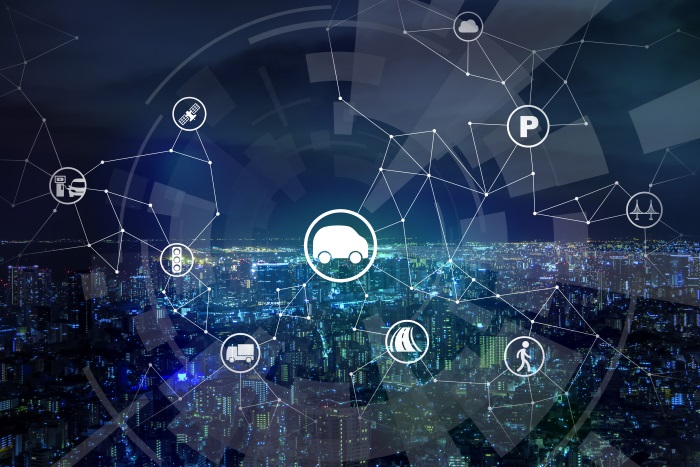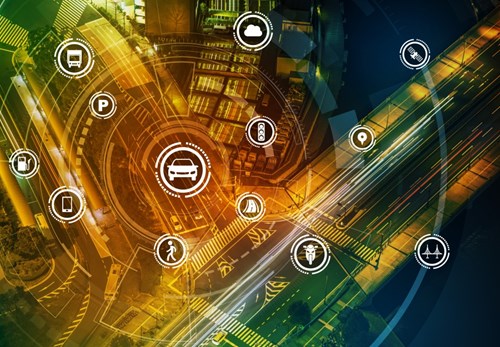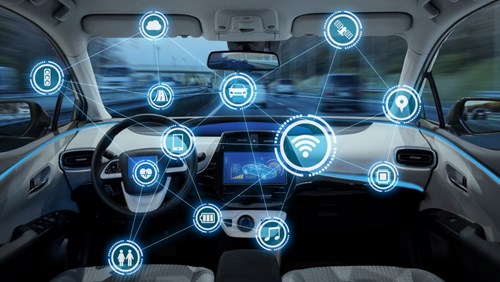
Later this week, Q-Free and Nedap will be featuring in our Parking Network news video, sharing their insights into the role of connectivity and IoT within the parking industry.
Before we hear more on the topic, let’s get to grips with the basics.
What Is Connectivity and the Internet of Things?
 The Internet of Things (IoT) is a network of machines, devices, and appliances that can connect, interact and exchange data. This connected network moves beyond objects, such as laptops and smartphones, to include traditionally non-internet-enabled devices such as vehicles and sensors. Once equipped with M2M (machine-to-machine) communication, these devices can be remotely monitored and controlled and can communicate with one another, without human intervention.
The Internet of Things (IoT) is a network of machines, devices, and appliances that can connect, interact and exchange data. This connected network moves beyond objects, such as laptops and smartphones, to include traditionally non-internet-enabled devices such as vehicles and sensors. Once equipped with M2M (machine-to-machine) communication, these devices can be remotely monitored and controlled and can communicate with one another, without human intervention.
What Makes IoT Unique?
The IoT is a truly global network, helping to connect resources across the globe, to provide insights through big data and analytics. It is not merely the connectivity of devices and objects, but also the removal of human processing and interaction from the capture and analysis of data in real-time.
How Can IoT and Connectivity Be Harnessed by the Parking Industry?
 The Internet of Things (IoT) can deliver affordable, scalable and secure services and technologies across a multitude of sectors and markets. Within the parking industry, IoT has applications for smart parking in off-street, on-street, municipal and private parking scenarios.
The Internet of Things (IoT) can deliver affordable, scalable and secure services and technologies across a multitude of sectors and markets. Within the parking industry, IoT has applications for smart parking in off-street, on-street, municipal and private parking scenarios.
Let’s take a closer look at two main areas of focus for IoT at the moment: Smart Cities and automated vehicles. Incorporating IoT and innovative technology into the urban ecosystem is making Smart Cities a possibility, whilst digitizing parking will prepare us for an age of automated vehicles and valet parking.
How Will IoT Use Smart Parking To Create Smart Cities?
Currently, many cities are moving toward smart connected parking, which aims to relieve the burden on drivers, cities, and the environment.
By implementing IoT technologies, real-time vehicle detection and the location of available parking spaces is making several benefits more easily attainable:
- Search time is reduced, improving the motorist experience
- Shorter search times increase urban mobility, reducing greenhouse gas emissions
- Parking revenue increases, as dynamic pricing can be introduced, adjusting prices in line with demand
- Parking enforcement becomes more efficient and less reliant on enforcement officers.
A number of smart parking solutions are already in place in smart cities, including ground and post sensors, and vehicles which can register vacant spaces as they drive past them, feeding this data to the IoT Cloud where it can be transmitted to vehicles searching for spaces.
How Will IoT Help The Evolution Of Automated Vehicles and Automated Parking?
Soon parking will not require a driver at all. Instead, cameras installed in parking garages will map the facility and transmit this data directly to a vehicle so that it can avoid obstacles and park in an available space.
the facility and transmit this data directly to a vehicle so that it can avoid obstacles and park in an available space.
In fact, with the introduction of entirely automated vehicles, we expect to see IoT playing a crucial role. People will be able to summon cars using a mobile app, and a car will then be released from the nearest location. We are already seeing automated parking facilities invest in the technology required for this. And we are not far from a future where cars drive, park and then charge themselves.
Remember to tune in to the Parking News this week to find out more!





